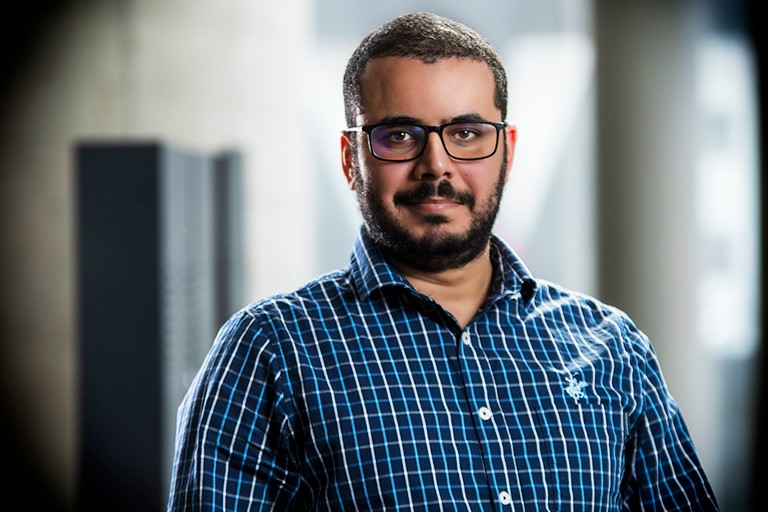Concordia graduate student recognized for his work on 6G networks and visible light communication
 Mohamed Amine Arfaoui: “My ultimate target is to tailor the technology to real-world settings.”
Mohamed Amine Arfaoui: “My ultimate target is to tailor the technology to real-world settings.”
For those just getting used to the idea of 5G wireless networks, get with the times! 6G is on the way, with a planned rollout for sometime in the 2030s.
Mohamed Amine Arfaoui, a PhD student in information systems engineering at the Gina Cody School of Engineering and Computer Science, is currently working on the development of 6G networks through visible light communication (VLC) technology.
As first author on a research paper that examines advancements in VLC and security, Arfaoui won a Prix Relève étoile Louis Berlinguet from Quebec’s Fonds de recherche - Nature et Technologies in February. The FRQNT confers the prize monthly to promote and recognize exceptional research by graduate students and postdoctoral fellows in Quebec.
Arfaoui explains why VLC and optical wireless communications are widely relevant for the cities of tomorrow.
‘An appealing technology for smart cities and factories’
Tell us a bit about your academic background and your research.
Mohamed Amine Arfaoui: I am currently doing my PhD under the supervision of Gina Cody School professors Chadi Assi and Ali Ghrayeb. My research interests are the application of communication theory and signal processing in the design of 5G and 6G wireless communication technologies, with a special focus on optical wireless communications and physical-layer security.
What is visible light communication and how does it relate to 6G wireless technology?
MAA: VLC technology exploits the visible light emitted by luminous sources, such as lamps and LEDs, to transmit data in a wireless manner. VLC is a promising solution for meeting the requirements of 6G networks owing to its large unexploited spectrum, which translates to significantly higher transmission rates.
What are the applications for 6G technology?
MAA: VLC is considered an appealing technology for various 6G applications, such as smart cities, smart factories, autonomous and flying vehicles, green open spaces, smart hospitals and airports where the use of radio frequency signals is prohibited. In short, it’s destined for most of our society, industry and public and private use.
What was the focus of your Relève étoile–winning paper?
MAA: I’ve discovered that this technology has several shortcomings, security being one of them, due to the broadcast nature of VLC systems, especially in public spaces. Put simply, our paper is about how to boost the emergence and deployment of VLC, while satisfying a high level of data security.
This includes a survey of all the physical layer security (PLS) techniques reported in the literature on VLC systems. It proposes a number of open research directions for PLS-VLC systems to realize the potential of such technologies.
What’s next for you?
MAA: My ultimate target is to tailor VLC technology to real-world settings in an effort to deploy as many multiple-access 6G networks as possible. In the meantime, I’ll continue my research collaborations into optical wireless communications with my colleagues and research group from Concordia and with our collaborators at the LiFi Research and Development Centre at the University of Strathclyde, Glasgow.
Read Mohamed Amine Arfaoui’s Prix Relève étoile Louis Berlinguet-winning paper.


